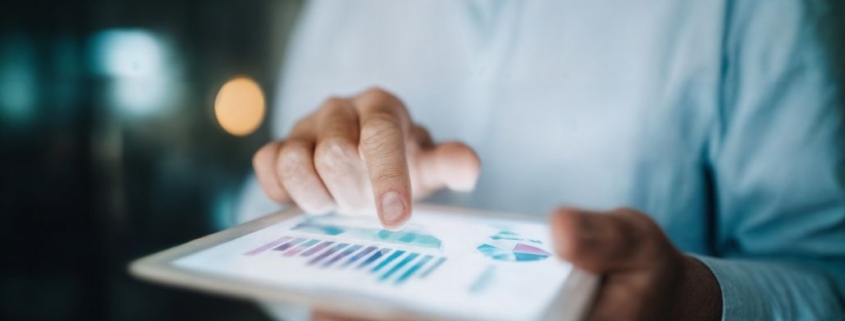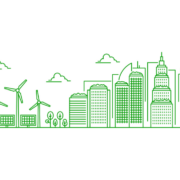Is this the data center metric for the 2030s?
When the PUE metric was first proposed and adopted at a Green Grid meeting in California in 2008, few could have forecast how important this simple ratio — despite its limitations — would become.
Few would have expected, too, that the industry would make so little progress on another metric proposed at those same early Green Grid meetings. While PUE highlighted the energy efficiency of the non-IT portion of a data center’s energy use, a separate “useful work” metric was intended to identify how much IT work was being done relative to the total facility and IT energy consumed. A list of proposals was put forward, votes were taken, but none of the ideas came near to being adopted.
Sixteen years later, minimal progress has been made. While some methods for measuring “work per energy” have been proposed, none have garnered any significant support or momentum. Efforts to measure inefficiencies in IT energy use — by far the largest source of both energy consumption and waste in a data center — have constantly stalled or failed to gain support.
That is set to change soon. The European Union and key member states are looking to adopt representative measurements of server (and storage) work capacity — which, in turn, will enable the development of a work per energy or work per watt-hour metric (see below and accompanying report).
So far, the EU has provided limited guidance on the work per energy metric, which it will need to agree in 2025 or 2026. However, it will clearly require a technical definition of CPU, GPU and accelerator work capacity, along with energy-use boundaries.
Once the metric is agreed upon and adopted by the EU, it will likely become both important and widely cited. It would be the only metric that links IT performance to the energy consumed by the data center. Although it may take several years to roll out, this metric is likely to become widely adopted around the world.
The new metric
The EU officials developing and applying the rules set out in the Energy Efficiency Directive (EED) are still working on many key aspects of a data center labeling scheme set to launch in 2026. One area they are struggling with is the development of meaningful IT efficiency metrics.
Uptime Institute and The Green Grid’s proposed work per energy metric is not the only option, but it offers many key advantages. Chief among them: it has a clear methodology; the work capacity value increases with physical core count and newer technology generations; and it avoids the need to measure the performance of every server. The methodology can also be adapted to measure work per megawatt-hour for GPU/accelerator-based servers and dedicated storage equipment. While there are some downsides, these will likely be shared by most alternative approaches.
Full details of the methodology are outlined in the white papers and webinar listed at the end of the report. The initial baseline work — on how to calculate work capacity of standard CPU-based servers — was developed by The Green Grid. Uptime Institute Sustainability and Energy Research Director Jay Dietrich extended the methodology to GPU/accelerator-based servers and dedicated storage equipment, and expanded it to calculate the work per megawatt-hour metric.
The methodology has five components:
- Build or access an inventory of all the IT in the data center. The required data on CPU, GPU and storage devices should be available in procurement systems, inventory management tools, CMMS or some DCIM platforms.
- Calculate the work capacity of the servers using the PerfCPU values available on The Green Grid website. These values are based on CPU cores by CPU technology generation.
- Include GPU or accelerator-based compute servers using the 32-bit TFLOPS metrics. An alternative performance metric, such as Total Processing Performance (TPP), may be used if agreed upon later.
- Include online, dedicated storage equipment (excluding tape) measured in terabytes.
- Collect data, usually from existing systems, on:
- Power supplied to CPUs, GPUs and storage systems. This should be relatively straightforward if the appropriate meters and databases are in place. Where there is insufficient metering, it may be necessary to use reasonable allocation methods.
- Utilization. It is critical for a work per energy metric to know the utilization averages. This data is routinely monitored in all IT systems, but it needs to be collected and normalized for reporting purposes.
With this data, the work per energy metric can be calculated by adding up and averaging the number of transactions per second, then dividing it by the total amount of energy consumed. Like PUE, it is calculated over the course of a year to give an annual average. A simplified version, for three different workloads, is shown in Figure 1.
Figure 1 Examples of IT equipment work-per-energy calculations

Challenges
There are undoubtedly some challenges with this metric. One is that Figure 1 shows three different figures for three different workloads — whereas, in contrast, data centers usually report a single PUE number. This complexity, however, is unavoidable when measuring very different workloads, especially if the figure(s) are to give meaningful guidance on how to make efficiency improvements.
Under its EED reporting scheme, the EU has so far allowed for the inclusion of only one final figure each for server work capacity and storage capacity reporting. While a single figure works for storage, the different performance characteristics of standard CPU servers, AI inference and high-performance compute, and AI training servers make it necessary to report their capacities separately. Uptime argues that combining these three workloads into a single figure — essentially for at-a-glance public consumption — distorts and oversimplifies the report, risking the credibility of the entire effort. Whatever the EU decides, the problem is likely to be the same for any work per energy metric.
A second issue is that 60% of operators lack a complete component and location inventory of their IT infrastructure. Collecting the required information for the installed infrastructure, adjusting purchasing contracts to require inventory data reporting, and automating data collection for new equipment represents a considerable effort, especially at scale. By contrast, a PUE calculation only requires two meters at a minimum.
However, most of the data collection — and even the calculations — can be automated once the appropriate databases and software are in place. While collecting the initial data and building the necessary systems may take several months, doing so will provide ongoing data to support efficiency improvements. In the case of this metric, data is already available from The Green Grid and Uptime will support the process.
There are several reasons why, until now, no work per energy metric has been successful. Two are particularly noteworthy. First, IT and facilities organizations are often either entirely separate — as in colocation provider/tenant — or they do not generally collaborate or communicate, as is common in enterprise IT. Even when this is not the case, and the data on IT efficiency is available, chief information officers or marketing teams may prefer not to publicize serious inefficiencies. However, such objections will no longer hold sway if legal compliance is required.
The second issue is that industry technical experts have often let the perfect stand in the way of the good, raising concerns about data accuracy. For an effective work per energy metric, the work capacity metric needs to provide a representative, configuration-independent measure that tracks increased work capacity as physical core count increases and as new CPU and GPU generations are introduced.
The Green Grid and Uptime methodologies will no doubt be questioned or opposed by some, but they achieve the intended goal. The work capacity metric does not have to drill down to specific computational workloads or application types, as some industry technologists demand. The argument that there is no reasonable metric, or that it lacks critical support, is no longer grounds for procrastination. IT energy inefficiencies need to be surfaced and understood.
Further information
To access the Uptime report on server and storage capacity (and on work per unit of energy):
Calculating work capacity for server and storage products
To access The Green Grid reports on IT work capacity:
IT work capacity metric V1 — a methodology
Searchable PerfCPU tables by manufacturer
To access an Uptime webinar discussing the metrics discussed in this report:



 2019
2019


 2019
2019 UI @ 2020
UI @ 2020 2020
2020